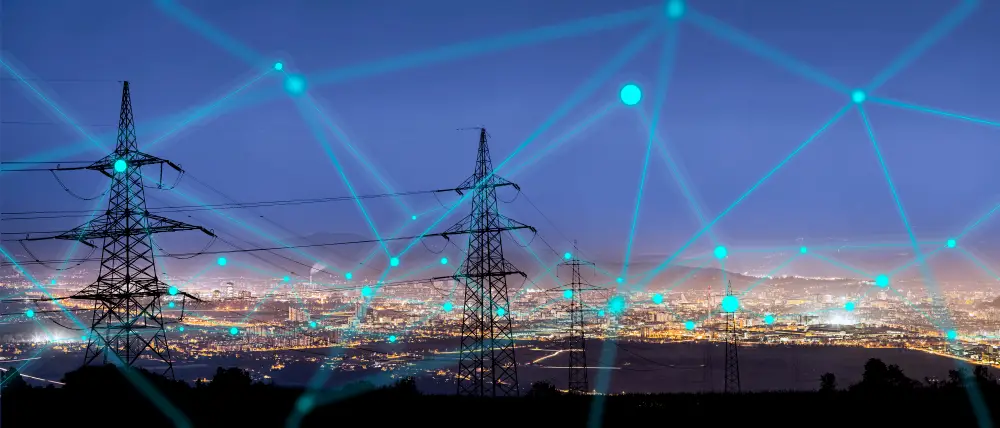
Revolutionizing Electrical Distribution Operations: The Power of Automation in DER Work Management
In the ever-evolving landscape of energy distribution, the integration of Distributed Energy Resources (DER) has become a pivotal aspect of modern power systems. As utilities strive to enhance efficiency, reliability, and sustainability, the role of automation in every facet of electrical distribution operations has become indispensable. This blog explores the significance of automation in key processes supporting new business models, especially in the DER sector. We’ll delve into the entire work management cycle – from customer applications to the closure of processes – and quantify the efficiency gains achieved through automation.
The Rise of Distributed Energy Resources (DER)
Distributed Energy Resources, encompassing solar panels, wind turbines, energy storage, and other decentralized technologies, are reshaping the power landscape. Utilities are witnessing a surge in customer applications seeking to integrate DER into the grid, challenging traditional work management systems. As the demand for cleaner and more sustainable energy solutions grows, along with the number of applicants for DER, the need for efficient and streamlined processes becomes paramount.
Automation in Customer Applications
Traditionally, customer applications for DER integration involved a manual and often time-consuming process. Automation in this stage expedites the application review, validation, and approval processes. Advanced algorithms can assess technical feasibility, grid impact, and regulatory compliance swiftly, allowing utilities to respond to customer requests in a fraction of the time and with minimal human intervention.
Engineering and Design Optimization
Automation extends its reach into the engineering phase, where precise designs and configurations are crucial for successful DER integration. By leveraging automated design tools, utilities can optimize layouts, assess potential grid impacts, and ensure compliance with local regulations. This not only accelerates the engineering process but also enhances the accuracy of the proposed solutions.
Efficient Deployment and Installation
The deployment and installation phase often involve complex logistics and coordination. Automation plays a pivotal role in scheduling, resource allocation, and real-time monitoring of deployment activities. Automated systems can dynamically adjust to unforeseen challenges, ensuring that the installation process stays on track and minimizing downtime.
Closing the Loop with Automated Closure Processes
Automation doesn’t stop when the physical deployment is complete. Closing the loop involves documentation, compliance verification, and customer communication. Automated closure processes streamline these tasks, reducing the likelihood of errors and ensuring that all necessary documentation is readily available for auditing purposes.
Monitoring and Maintenance
While not technically part of the DER installation process, integration of automated tools at the start of the process for future monitoring and maintenance of the installation is critical. It assures that the installed system continues to provide reliable and predictable service to the customer for years to come. Such early integration also enhanced insight for future grid operations and additions. By planning for long term monitoring and maintenance at the start of the process, costs are reduced and efficiency and effectiveness are multiplied throughout the DER ecosystem.
Quantifying Efficiency Results
The implementation of automation throughout the DER work management cycle yields tangible efficiency gains. By comparing key performance indicators (KPIs) before and after automation, utilities can quantify improvements in time-to-deployment, cost savings, and overall operational efficiency. The results are often striking, with some utilities reporting efficiency gains in the range of 20% to 40%.
Conclusion
As utilities navigate the changing landscape of electrical distribution operations, embracing automation in DER work management processes has become a necessity. The seamless integration of distributed energy resources, as well as the correct and timely analysis of DER’s impact to the distribution network, demands a responsive, agile, and efficient approach. Automation emerges as the linchpin in achieving these objectives, driving the transformation toward a more sustainable and resilient energy future. The quantifiable efficiency gains underscore the importance of investing in and adopting automated solutions, ensuring that utilities can meet the demands of a rapidly evolving energy landscape.
Get in touch!
For further insights, reach out to Lee Cocis, Managing Partner at IT Vizion.
Fill out the form below with your name, title, and business email and we’ll get in touch soon!

IT Vizion is the OT/IT system integrator of choice for some of the largest Oil&Gas, Chemicals, and Manufacturing companies worldwide.
Copyright ©2025 IT Vizion
Contact info
Let’s connect. Contact IT Vizion today.
- We Operate Worldwide
- +1 (951) 256-4320
- [email protected]
